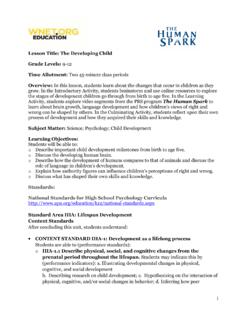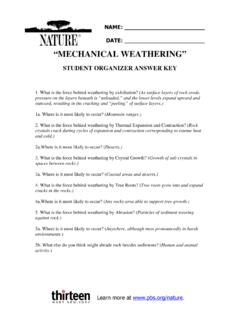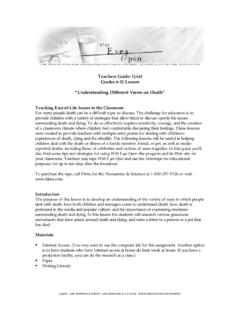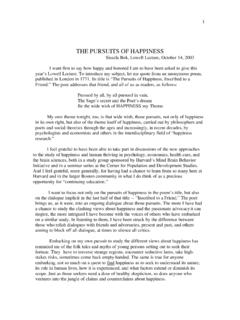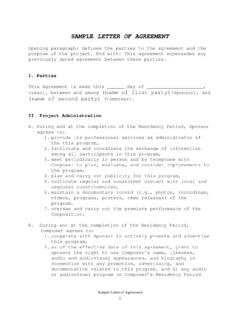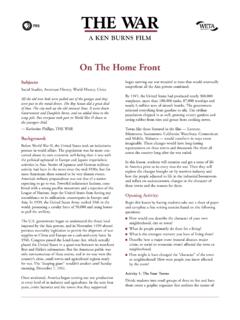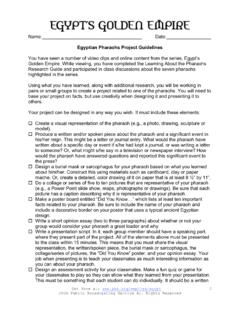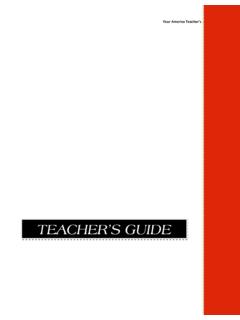Transcription of Roles and Responsibilities of the President
1 1 Roles and Responsibilities of the President The Roles of the President Chief Executive: The President is the administrative head of the government. Duties include meeting with the cabinet, signing bills, issuing executive orders and appointing government officials. Chief Diplomat: The President negotiates treaties with foreign governments. He also appoints ambassadors. Chief of State: The President is the ceremonial head of the United States, speaking to the nation on topics of interest, meeting with important officials, and welcoming Heads of State from other countries. Commander-in-Chief of the Armed Forces: The President is the civilian head of the military and can order troops into battle or send them overseas.
2 Chief Legislator: The President recommends legislation to Congress. The President can also threaten to veto bills s/he opposes. Chief of Party: The President is the political party leader of his or her and helps members get elected. The President campaigns for those members who support his or her policies. The Responsibilities of the President As prescribed in Article 2 of the Constitution ARTICLE II SECTION 1: The executive Power shall be vested in a President of the United States of America. He shall hold his Office during the Term of four Years, and, together with the Vice President , chosen for the same SECTION 2: The President shall be Commander in Chief of the Army and Navy of the United States, and of the Militia of the several States, when called into the actual Service of the United States.
3 He shall have Power, by and with the Advice and Consent of the Senate, to make Treaties, provided two thirds of the Senators present concur; and he shall nominate, and by and with the Advice and Consent of the Senate, shall appoint Ambassadors, other public Ministers and Consuls, Judges of the supreme Court, and all other Officers of the United States, whose Appointments are not herein otherwise provided for, and which shall be established by Law .. 2 SECTION 3: He shall from time to time give to the Congress Information of the State of the Union, and recommend to their Consideration such Measures as he shall judge necessary and expedient, he may, on extraordinary Occasions, convene both Houses, or either of them, and in Case of Disagreement between them, with Respect to the Time of Adjournment, he may adjourn them to such Time as he shall think proper; he shall receive Ambassadors and other public Ministers; he shall take Care that the Laws be faithfully executed, and shall Commission all the Officers of the United States.
4 Documents The following items can be found at the Library of Congress American Memory website or the National Archives website. Lincoln s Thanksgiving Day Proclamation, October 3, 1863. In the National Archives Abraham Lincoln, April 30, 1864. List of Sioux Indians Pardoned. From John Pope to Abraham Lincoln, November 24, 1862 ( telegram concerning the 300 Sioux condemned to death) Presidential Proclamation 94 of September 24, 1862 Suspending the Writ of Habeas Corpus. National Archives. President Lincoln s Emancipation Proclamation of January 1, 1863. National Archives. telegram from General William T. Sherman to President Abraham Lincoln announcing the surrender of Savannah, Georgia, as a Christmas present to the President , December 22, 1864.
5 National Archives. telegram from President Abraham Lincoln to Mrs. Lincoln, April 28, 1864. National Archives. Message of President Abraham Lincoln nominating Salmon P. Chase to be Chief Justice of the Supreme Court, December 6, 1864. National Archives. Message of President Abraham Lincoln nominating Ulysses S. Grant to be Lieutenant General of the Army March 1, 1864. National Archives. As you examine the document, answer the following questions on an index card. Title of the document Date of the document if available, including day and month Author or creator of the document Nature of the document or designate as personal or private 3 Two or three sentence summary of the document The document and its relationship to the Constitution (if relevant).
6 Under what powers of the Executive branch does it fall, if any? Discussion Questions Briefly summarize the content of the document. What is the President trying to accomplish in it, or what is being asked of him? What role do you think President is playing in the document? Under what Constitutional authority is the President acting in this document? Do you feel he is acting within his powers as President given that the country is at war, or do you think he may have exceeded them? Why?
